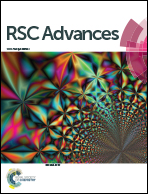Catalytic combustion of soot over Ce and Co substituted three-dimensionally ordered macroporous La1−xCexFe1−yCoyO3 perovskite catalysts
Abstract
Three-dimensionally ordered macroporous (3DOM) La1−xCexFe1−yCoyO3 (x = 0–0.4, y = 0–0.6) perovskite catalysts were successfully prepared by colloidal crystal templating method and employed for soot combustion. The morphology, structure, and redox properties of the catalysts were characterized by XRD, FT-IR, SEM, BET, UV-Vis DRS, XPS, O2-TPD and H2-TPR techniques, and the catalytic activities for soot combustion were evaluated by a Temperature programmed oxidation (TPO) device using NO/O2 as oxidant. Co-substitution at the Fe-site of 3DOM LaFeO3 perovskites can effectively enhance the catalytic activity, however, the 3DOM structure is partly destroyed, which restricts the further improvement of the activity. The appropriate doping of Ce in the La-site can lower the solidification temperature of the precursors, and thus damage of the structure can be avoided. Additionally, the reducibility and surface adsorbed oxygen species of the catalyst are also improved as revealed by H2-TPR, O2-TPD and XPS. Whereas with an excess of Ce substitution, Co3O4 and CeO2 impurities will generate and grow as demonstrated by XRD and FT-IR. Among all the catalysts, 3DOM La0.7Ce0.3Fe0.4Co0.6O3 perovskite with a well-ordered macroporous structure possesses the highest activity for soot combustion.


 Please wait while we load your content...
Please wait while we load your content...